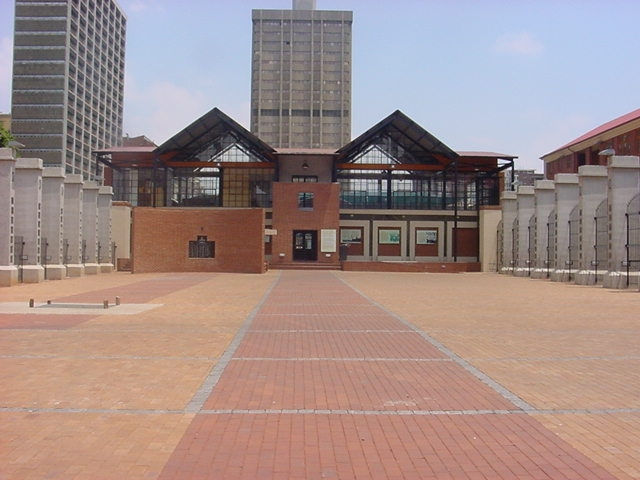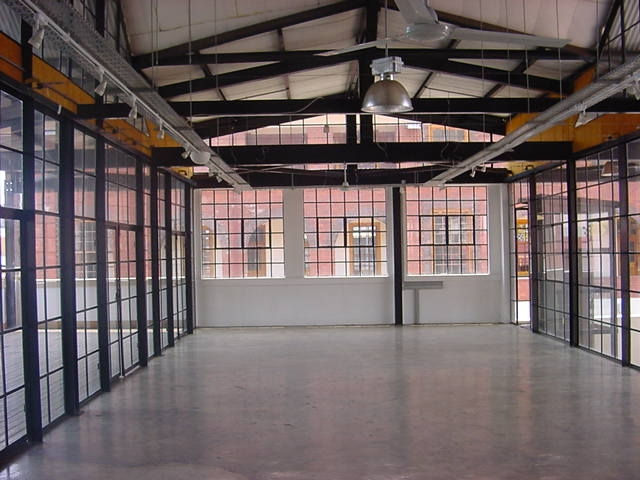Exciting finds in Drill Hall development
- lucilledavie

- Jun 27, 2003
- 3 min read

A pile of rusty rifles and bayonets, old stone foundations, limb moulds, a live mortar, an underground rifle range and a diesel boiler have been found on the site of the 98-year-old Drill Hall, presently undergoing development into a community and heritage site after being gutted by fire in April 2002.
The Drill Hall, on the eastern side of the city near to Joubert Park, built in 1904 and used as an army barracks until 1992, was the site of the initial stages of the historic Treason Trialm from 1955 to 1961, in which former president Nelson Mandela and Walter Sisulu were among the accused. It became a home for homeless people from the mid-1990s, housing over 200 people until a devastating fire last year in which five people died and the Hall and portions of the west wing were razed to the ground. The previous year a fire devastated the eastern section of the barracks, killing five people.
The southern and northern sections, built at a later stage, were untouched by the fire.
The City was on the brink of moving the homeless people, restoring the building and declaring it a national monument, when the fire occurred.
The Martini Henry rifles found under what was the hall, believed to be from the Anglo-Boer or South African War (1899-1902), together with a live mortar found alongside a diesel tanker used to generate power for the site, were found when new foundations were being dug for a row of columns to be placed on the south side of the site.

The Bomb Squad were called when the mortar was found, confirming that it was live and that it had Italian origins.
An artificial limb factory existed in a section of the southern block, and several limb moulds were found while excavating.
Stone foundations have also been found, believed to be from what might have a “Native Gaol” built on the site in the 1890s, before the Drill Hall was built in 1904.

Square development
The development has been driven by the desire to honour the layers of history of the site: a military barracks that supplied regiments throughout the South African War and the Bambata Rebellion of 1906; regiments to suppress the miners’ strikes of 1913, 1914 and 1922; the Treason Trial of the late 1950s, and most recently, supplying shelter to several hundred homeless people. A footprint of its previous use, in the form of foundation outlines, will remain, as a reminder to visitors of where the Hall stood and its significance as a historical site.
The Johannesburg Development Agency, working together with the South African Heritage Resources Agency, is managing the present development. An amount of R10-million has been set aside for the development.
The new development will see the central section converted into an open square, to be used as a parade or concert ground, with a row of five-metre high columns and trees running down the north and south borders of the area. The west wing, which was originally a two-storey building of officers’ mess and offices, of which the upper floor was destroyed in the fire, will be restored to a one-storey set of offices with a central entrance cut through onto the square. A podium is to be built just beyond the entrance, overlooking the square.
The west wing is to house display boards capturing photographs and diagrams of the original structure. Some of the rusty rifles will be displayed on the walls. Future heritage tours will take in the Drill Hall site and the Fort, the city’s other heritage barracks.

The remainder of the buildings on the south side, where the armoury was housed, is to be used for community facilities with a day centre, in memory of the homeless who occupied the buildings.
The eastern side of the site is to house “art bays”, a partly-open structure which will contain large metal screens for artworks in a living exhibition in which the community will be invited to add their drawings. Music and story-telling will also take place here.
The northern two-storey building, which was untouched by the fire, will be renovated and restored for the Rand Light Infantry, which originally occupied the building. They will conduct parades in the square.
The underground rifle range, built in 1923 and around 25 metres in length, will be restored and used by the army as a rifle range again, but using modern lazar firing.
Source: joburg.org.za
Update: 2 March 2020
The process of transferring ownership of the Drill Hall from the Gauteng Provincial Government to the City of Johannesburg has not yet taken place. There has been a proposal to revive the site. In the meantime, the site has been neglected and crime and drugs have become a problem in the area.







Comments